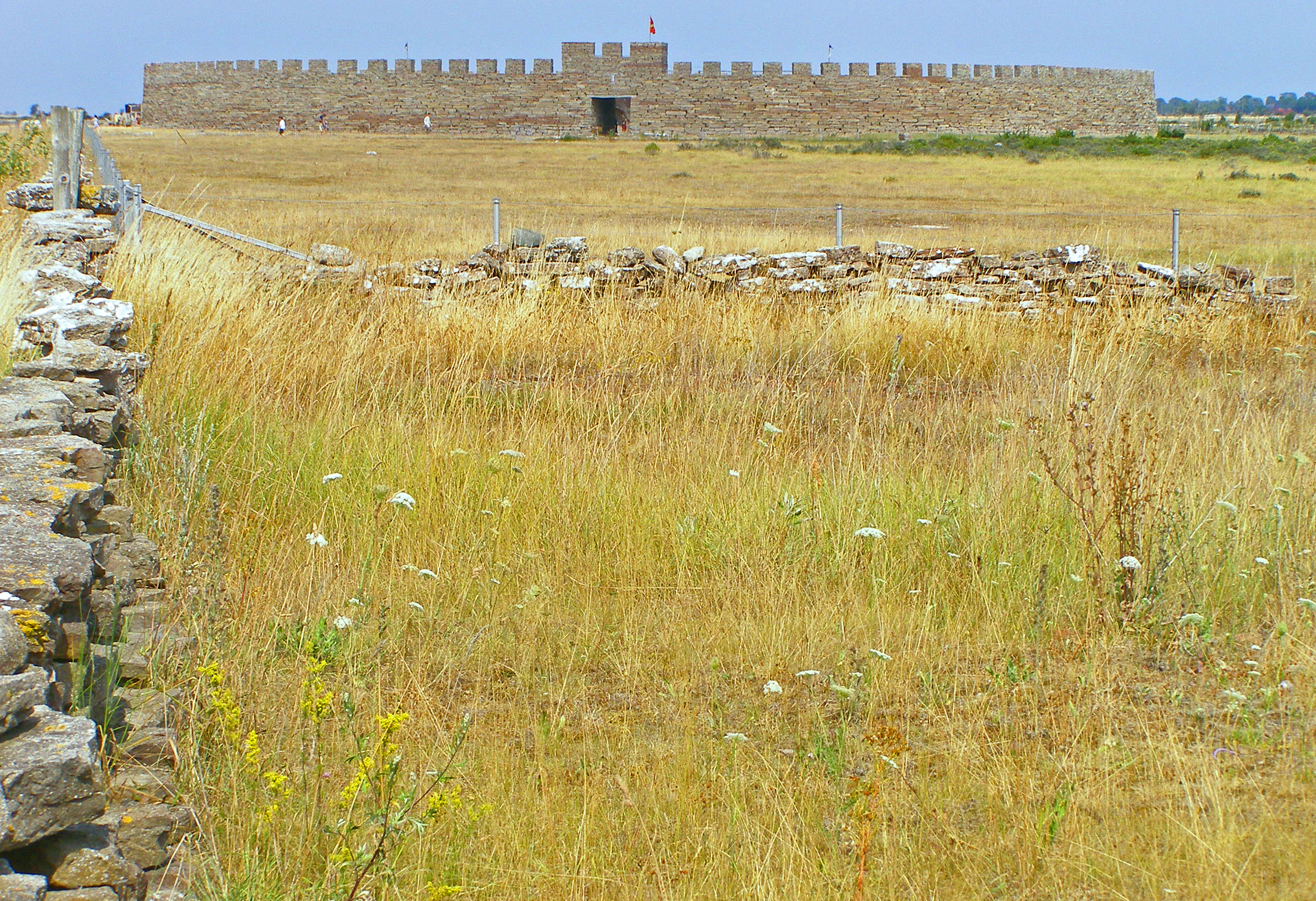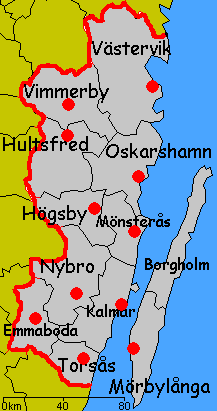|
Sörby (Öland)
Sörby is a village in the municipality of Borgholm Municipality, Borgholm within the island Provinces of Sweden, province of Öland and the county of Kalmar County, Kalmar in Sweden. It is in Gärdslösa socken. the village had 59 inhabitants. The name of the settlement appears as ''Söderby'' in older sources. One possible etymology is that it is "south" (), but there is no obvious centre to the north to which this might refer; another suggestion is that it derives from a word such as ''sur'' or ''sörjig'' (damp, slushy) and meant a marshy area. In 1540 the village was part of the lands of the Diocese of Linköping and had 3½ dwellings and 6 smallholdings; in 1544 there were 4 freeholders, one of them Gustav I of Sweden, Gustav Vasa. References {{Localities in Borgholm Municipality Populated places in Borgholm Municipality ... [...More Info...] [...Related Items...] OR: [Wikipedia] [Google] [Baidu] |
Borgholm Municipality
Borgholm Municipality () is a municipality in Kalmar County, south-eastern Sweden, constituting the northern half of the island of Öland in the Baltic Sea. The municipal seat is located in the city of Borgholm. Notable historic sites in this municipality are Borgholm Castle and Halltorps Estate. The local government reform in the 1970s saw the creation of two municipalities on the island of Öland. Borgholm Municipality is the northern of the two and consists of sixteen original (pre-1952) entities. The southern half of the island is made up of Mörbylånga Municipality. It is the birthplace of John Eke, A long distance runner who competed in the 1912 Olympics, He later competed for the Irish American Athletic Club in NYC Localities There are 5 urban areas (also called Tätort or localities) in Borgholm Municipality. In the table the localities are listed according to the size of the population as of December 31, 2005. The municipal seat is in bold characters. Sister ... [...More Info...] [...Related Items...] OR: [Wikipedia] [Google] [Baidu] |
Provinces Of Sweden
The 25 provinces of Sweden () are historical, geographical and cultural regions. They have no administrative function, but retain their own cultural identities, dialects and folklore. Several were administrative subdivisions until 1634, when they were replaced by the counties of Sweden (). Some were conquered later on from Denmark–Norway. Others, like the provinces of Finland, have been lost. In some cases, the county and province borders correspond almost exactly, as with Blekinge and Blekinge County. The island of Gotland is both a province, a county and a municipality (''kommun''). The only other province to share a name with a modern municipality is Härjedalen, though the borders are not quite the same. Administrative borders are subject to change – for example, several of today's counties were created in the 1990s – while the provincial borders have remained stable for centuries. All the provinces are also ceremonial duchies, but as such have no administrati ... [...More Info...] [...Related Items...] OR: [Wikipedia] [Google] [Baidu] |
Öland
Öland (, ; ; sometimes written ''Oland'' internationally) is the second-largest Swedish island and the smallest of the traditional provinces of Sweden. Öland has an area of and is located in the Baltic Sea just off the coast of Småland. The island has over 26,000 inhabitants. It is separated from the mainland by the Kalmar Strait and connected to it by the Öland Bridge, which opened on 30 September 1972. The county seat Kalmar is on the mainland at the other end of the bridge and is an important commercial centre related to the Öland economy. The island's two municipalities are Borgholm and Mörbylånga named after their municipal seats. Much of the island is farmland, with fertile plains aided by the mild and sunny weather during summer. Öland does not have separate political representation at the national level, and is fully integrated into Sweden as part of Kalmar County. Administration The traditional provinces of Sweden no longer serve administrative or ... [...More Info...] [...Related Items...] OR: [Wikipedia] [Google] [Baidu] |
Kalmar County
Kalmar County () is a Counties of Sweden, county or ''län'' in southern Sweden. It borders the counties of Kronoberg County, Kronoberg, Jönköping County, Jönköping, Blekinge County, Blekinge and Östergötland County, Östergötland. To the east in the Baltic Sea is the island Gotland County, Gotland. The counties are mainly administrative units. Geographically Kalmar County covers the eastern part in the Småland province, and the entire island of Öland. Culture Much of Öland's present day landscape known as the Stora Alvaret has been designated as a World Heritage Site by UNESCO. This southern part of Öland is known for a large number of rare species; early Paleolithic settlement at Alby, Öland, Alby; other prehistoric remains such as the Gettlinge Gravefield and Eketorp Fortress; and the Ottenby Nature Preserve. Administration Kalmar County was integrated with Kronoberg County until 1672. Blekinge County, Blekinge was a part of Kalmar County between 1680 and 168 ... [...More Info...] [...Related Items...] OR: [Wikipedia] [Google] [Baidu] |
Socken
Socken ( or ) is the name used for a part of a counties of Sweden, county in Sweden. In Denmark, similar areas are known as , in Norway or and in Finland or . A is a rural area formed around a church, typically in the Middle Ages. A socken originally served as a parish. Later, until the Swedish municipal reforms of 1862, it also served as a civil parish or an parish (administrative division), administrative parish, and became a predecessor to today's municipalities of Sweden, municipalities of Finland, Finland, municipalities of Norway, Norway and municipalities of Denmark, Denmark. Today it is a traditional area with frozen borders, in Sweden typically identical to those of the early 20th century rural parishes. The socken also served as a registration unit for buildings, in Sweden recently replaced by identical registration districts in Sweden, registration districts as registration unit. A socken consists of several villages and industry Human settlement, localities (comp ... [...More Info...] [...Related Items...] OR: [Wikipedia] [Google] [Baidu] |
Diocese Of Linköping
The Diocese of Linköping () is a diocese within the Church of Sweden administering the Östergötland County, the north eastern part of Jönköping County and the northern part of Kalmar County. It comprises nine deaneries subdivided into 176 parishes with a total of 443,000 members. The diocese's largest parish is Motala. The Diocese of Linköping has a rank directly below the Archdiocese of Uppsala of the Church of Sweden. The current bishop is Marika Markovits. The diocesan territory comprises Östergötland County and parts of Jönköping and Kalmar County. It has 212 parishes with a total of 443,000 members. Pre-Reformation history The diocese originally included Småland, Östergötland, the Islands of Gotland and Öland. The district of Värend in Småland was taken from Linköping and formed into the Diocese of Växjö about 1160. From 990 to 1100 the Diocese of Skara embraced the whole country of the Goths ( Gauthiod); it was then divided between those of Skar ... [...More Info...] [...Related Items...] OR: [Wikipedia] [Google] [Baidu] |
Gustav I Of Sweden
Gustav Eriksson Vasa (12 May 1496 – 29 September 1560), also known as Gustav I, was King of Sweden from 1523 until his death in 1560. He was previously self-recognised Protector of the Realm ('' Riksföreståndare'') from 1521, during the ongoing Swedish War of Liberation against King Christian II of Denmark, Norway and Sweden. Gustav rose to lead the Swedish War of Liberation following the Stockholm Bloodbath, where his father was executed. Gustav's election as king on 6 June 1523 (the National Day of Sweden) and his triumphant entry into Stockholm eleven days later marked Sweden's final secession from the Kalmar Union. During his reign, Gustav initiated the Protestant reformation in Sweden, transformed the country from an elective to a hereditary monarchy and established a standing army and navy. Early life Gustav Eriksson, a son of Cecilia Månsdotter Eka and Erik Johansson Vasa, was probably born in 1496. The birth most likely took place in Rydboholm Castle, nor ... [...More Info...] [...Related Items...] OR: [Wikipedia] [Google] [Baidu] |





